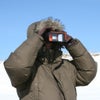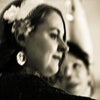The Berlin State Library (German: Staatsbibliothek zu Berlin) is a library in Berlin, Germany and a property of the Prussian Cultural Heritage Foundation.
The State Library runs several premises, three of which are open for users, namely House 1 in Unter den Linden 8, House 2 in Potsdamer Straße 33 and the newspaper archive in a former warehouse in the Westhafen harbour of Berlin.
The Berlin State Library was founded in 1661 by Frederick William of Brandenburg as "Churfürstliche Bibliothek" at Cölln an der Spree. In 1701, the library was renamed "Royal Library at Berlin" and kept this name until the end of monarchy in Germany in 1918, then renamed to "Prussian State Library".
On May 10, 1933 a book burning ceremony was held by members of the Deutsche Studentenschaft (a rightist student association), also attended by S.A. ("brownshirts") and Nazi youth groups, at Bebelplatz on the instigation of the Propaganda Minister, Joseph Goebbels. The Nazis burned around 20,000 books, most of which were taken from the library, including works by Thomas Mann, Erich Maria Remarque, Heinrich Heine, Karl Marx and many other authors. Today a glass plate set into the Bebelplatz, giving a view of empty bookcases, commemorates this event.
During World War II most of the holdings (at the time some three million books and other materials) were hidden to safety in 30 monasteries, castles and abandoned mines. A part of its collections were returned to the original Berlin site at Unter den Linden (East Berlin) after 1945, and some relocated items, which happened to be stored in the now western occupation zones by the end of the war, were gathered in Marburg upon Lahn and later opened to the public as Hessian and then West German Library (Hessische resp. Westdeutsche Bibliothek). These holdings were relocated to West Berlin at the late 1970s in the new building now called House 2.
Many items of the collection are located in Poland and the territories of the former Soviet Union, such as the Berlinka collection, which were declared to be war reparations by the Polish state.
From 1992 on, the reunited Berlin State Library – Prussian Cultural Heritage provides a service at both its sites in the district of Mitte – Unter den Linden 8 and Potsdamer Straße 33.
The Berlin State Library, along with two other German institutions, the Beethoven-Haus and the Deutsches Rundfunkarchiv, also holds the autograph score, autograph leaves, and historic records for Ludwig van Beethoven's Symphony no 9, d minor, op. 125, which was inscribed on UNESCO’s Memory of the World Register in 2001.
The western library played a starring role in Wim Wenders' Wings of Desire. Two angels, the stars of the film, read the thoughts of the library's patrons.





